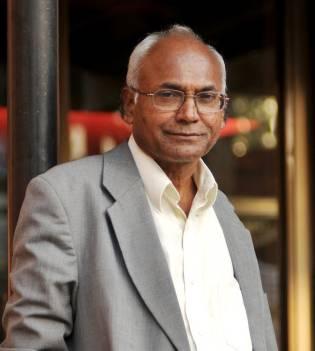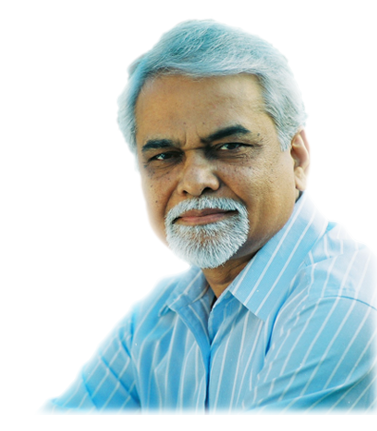Dr. Bhalchandra Mungekar
In the post colonial countries, suffering from pauperized agriculture on the one hand; and, virtual deindustrialization on the other, achieving faster rates of economic growth was naturally a preeminent objective of economic policy. For without substantially increasing, on a sustained basis, the volume of production of agricultural and industrial goods and, making available to the masses public, quasi-public and merit goods in sufficient quantities, it could have been futile to talk of creating more employment opportunities, raising levels of living of the people in general, and reducing the mass poverty.
However, there has been a growing realization, supported by empirical evidence, that even a higher rate of economic growth could not raise the pace of decline in poverty. Sastry (1980) showed that though growth rates accelerated in many post-colonial countries, it soon became evident that “they provided no guarantee in the secular rise of the material well-being of the masses; on the other hand, many countries in the third world experienced a widening of inequalities among the regions, and socio-economic groups, and the worsening in the levels of living of the people, sometimes absolute, at the bottom of the socio-economic pyramid”. A survey of 60 developing countries, with different levels of poverty, covering total population of 1,903 million i.e., 87.5 per cent of the developing world population showed that, during the period 1975-82, that “rapid economic growth and high income levels alone do not eliminate rural poverty” (FAO, 1986, emphasis added). Recently, UNDP (2005) revealed that much of the success in reducing poverty in the poor regions of the world was achieved during the decade of 1980s and the first half of the 1990s. For instance, “since the mid-1990s $1 a day poverty has been falling at 1/5th of the 1980-96 rate. This is despite the fact that average growth of the developing countries picked in the 1990s, increasing at more than double the per capita rate of the previous decade ( Ibid, p 34 ). Even China, the fastest growing economy in the world does not appear to be an exception to this general observation, inasmuch as between 1990 and 2001, the incidence of $1 a day declined by 50 per cent, with 130 million fewer people living below the international poverty line; and more than 90 per cent of this decline took place between 1990 and 1996 ( Ibid. p 60). In the case of India, too, this is likely to have happened in the post-economic reforms period. The state-level analysis of the relationship between the rate of growth and rate of reduction in poverty shows that, at all India level, the latter has not been found higher in the post-reforms period ( 1993-2005) compared to the pre-reforms period ( 1983-1993) though the rate of growth was higher in the post-reforms period (Mahendra Dev and Ravi, 2007). In fact, annual rate of decline of poverty during 1993-2005 is found lower compared to the period 1993-1998 that implies that the bulk of the decline during 1993-2005 took place in the first five years and very little poverty reduction was achieved between 1999-2005 (Himanshu, 2007).
Finally, the Planning Commission of the Government of India (2008) has reached the same conclusion. Not only did it maintain that “a major weakness in the economy is that the growth is not perceived as being sufficiently inclusive for many groups, especially Scheduled Castes, Scheduled Tribes, and minorities. Gender inequality also remains a pervasive problem and some of the structural changes taking place have an adverse effect on women. The lack of inclusiveness is borne out by data on several dimensions of performance. …”. It is categorical when it added that “though the percentage of the population below the official poverty line has come down from 36% in 1993-94 to 28% in 2004-05, ….the rate of decline in poverty has not accelerated along with the growth of GDP, and the incidence of poverty among certain marginalized groups, for example the STs, has hardly declined at all” (emphasis added).
Why should this have happened?
There would have been a number of factors, possibly closely inter-related, that may have caused such a disturbing scenario. It is quite possible to highlight some of them here too. But that would go beyond the scope of this exercise. I, therefore, would like to underline only one factor that according to me appears to be a fundamental one, particularly in the context of what I mentioned in the beginning.
It is the discourse of the development paradigm in the early stages of their development policy and strategy; the post colonial countries remained excessively preoccupied with the objective of securing higher rate of economic growth with theoretical justification. For instance, Lewis (1957) maintained: “First it should be noted that our subject matter is growth and not distribution. It is possible that output may be growing, and yet that the mass of the people may be becoming poorer. We shall have to consider the relationship between the growth and the distribution of output, but our primary interest is in analyzing not distribution but growth” (p 9, emphasis added).
India’s First Five Year Plan had clearly anticipated that “a progarmme aiming only at raising output might result in most of the increased wealth flowing into the hands of a few, leaving the mass of the people in their present state of poverty,” and still stressed that “in the initial stages the accent of endeavour must be on increased production” (Planning Commission, 1953, p 11).
Not that the post colonial countries including India have not adopted some policies and implemented some programmes towards securing inclusive growth, but by and large, they relied upon trickle-down. They somewhat divorced growth from distribution. Thus, it may not have been at all wrong to accord importance to higher rate of economic growth, even meaning thereby the expansion of output. What went wrong was not according equal priority to creating such mechanisms and institutional arrangements that would have helped distributing the benefits of growth fairly equally in the process of growth itself. This divorce between growth and distribution was more a matter of omission rather than commission, as it would be difficult to maintain that it happened only accidentally.
It is almost universally acknowledged that economic development is a process where a number of socio-cultural and political variables, influence, and sometimes substantially, the economic phenomenon, and ultimately decide the outcome of economic growth, particularly its benefits. Therefore, the policy-makers cannot decide the priorities and strategies of development in their respective countries purely on economic grounds. For “the set of policies in their development strategies determines which socio-economic groups of their population benefit or lose and how wealth and income is distributed. Policy questions of who benefits and loses are political decisions in development management, based on the power structure of the country” (FAO, 1986, p 48).
Here, I would like to mention only two important institutions that substantially influence the pattern of distribution of the benefits of growth: Caste and Gender. I shall also briefly mention about the third institution viz. religion, particularly with reference to the Muslim minority.
Caste system and untouchability practised in India have been the most ignominious socio-cultural institutions in the world. They not only divided the Indian society horizontaly and vertically, but also created a monopoly of property, power and prestige in the hands of the so-called upper castes; and imposed heaps of humiliation, disabilities, and destitution on the lower castes in general, and the untouchables in particular (Mungekar, 2007). For they thus denied, for centuries, to a vast majority of the people, now orally described as the Scheduled Castes and Scheduled Tribes, and commonly as the Dalits (mainly the former) socio-economic, political and educational entitlements and considerably blocked their access to the benefits of economic growth even in the post-Independence period. As a result, these two social groups, constituting about 27 per cent of the total population of the country (in absolute number, about 300 million) are found to be lagging behind the non-SC /ST population with respect to positive indicators of socio-economic development such as literacy, all levels of education- primary, secondary, higher, technical, vocational, and professional- good health, life expectancy, employment of all kinds and so on. On the other hand, they are above the non-SC/ST population in the areas of illiteracy, skill formation, unemployment, nutrition and poverty (Thorat, 2009). This is despite adopting some specially designed policies and programmes in the post-independence period for the advancement of these sections of the society, particularly, affirmative action in the form reservation of seats in legislatures, education and employment. Also, since the mid-1970s the Central and the State Governments have started implementing two economic programmes, the Tribal Sub-Plan for the STs and the Special Component Plan for the SCs prescribing their population-specific earmarking of Plan development funds of the Union and State annual plans. Though not implemented in letter and spirit, all these special programmmes did yield some results and increased the space of horizontal and vertical mobility of these sections. And yet, the gap between them and the rest of the population, mostly the non-SCs /STs persists. It is not difficult to pronounce as to what could have been the scenario with respect to their access to the benefits of economic growth.
What is to be further reckoned with is the stark fact of various forms of discrimination to which these sections are subjected to (See, Deshpande and Newman, 2007; Jodhka and Newman, 2007; Thorat, 2007; Thorat and Attewell, 2007; and Thorat, 2009). Though some constitutional and legal provisions have been enacted to overcome this discrimination and these have given some relief to these sections, there are many loopholes in the provisions themselves. As also there is no strong desire on the part of the concerned authorities to enforce these constitutional and legal provisions. For instance, during the five year period from 2000 to 2005, about 1,76,000 atrocities- 1,46,000 against the SCs and 30,000 against the STs- were registered in different parts of the country. These atrocities included instances of murders, rapes, kidnapping, loot, injuries, practices of untouchabilities and violation of civil rights. This was despite the SCs and STs (Prevention of Atrocities) Act, 1989, being in place.
What is still more distressing, the nation is not sensitive towards such atrocities, and even people’s highest representative forums such as the Parliament and the State Legislatures do not appear to be taking their due cognizance. It is therefore erroneous to single out the bureaucracy for faulty, or the lack of, implementation of the programmes specially designed for the advancement of the SCs and STs.
Gender has been another institution through which discrimination against women is channelised in all societies and perhaps at all times. In this context, “family, marriage and property are the main sources of creating and sustaining the inequalities. Which are further compounded by socio-cultural conventions and practices. As a result, women find themselves in a subordinate and vulnerable position with respect to all the above three institutions. This subordinate position is reflected in low levels of literacy, and education, incomplete schooling and high drop-out rates, higher rates of mortality, higher levels of wages being paid to men than women for the same amount of work, gender-based division of labour assigning low-paid, inferior and less prestigious jobs as repository of women, men’s control over earnings of women, and most importantly, their sexuality” (Mungekar, 2007).
Of late, women are increasingly becoming the victims of domestic violence that is acting as a major source of the violation of basic human rights. What is worse, in a society such as India, women are socialized to accept, tolerate and even rationalize domestic violence.”Violence of any kind has a detrimental impact on the economy of a country through increased disability, medical costs, and loss of labour hours: however, because women bear the brunt of domestic violence, they disproportionately bear the heath and psychological burdens as well” (Government of India, 2007).
Again, women, like any other socio-economic category, do not constitute a homogeneous category. They are differentiated, and sometimes substantially, on the basis of caste, level of education, religion, language, economic activity, place of domicile and so on. Though all women are exposed to certain common forms of discrimination strictly due to gender divide, the extent, nature and severity of discrimination is not be the same. A SC landless agricultural woman worker does suffer from gender-based discrimination; but she also suffers from illiteracy, caste ignominies, hard menial work, abysmally low wages, hunger, malnutrition, and poverty.
Let me now say a few words about the status of a religious minority viz. Muslims with respect to socio-economic development.
Of 18.4 per cent of total minority population in India, Muslims alone constituted 13.4 per cent (to be followed by 2.3 per cent Christains, 1.9 per cent Sikhs, 0.8 per cent Buddhists and 0.07 per cent Parsis). In absolute number, Muslims account for 140 million i.e. 70.82 per cent of the total 189.5 million minority population.
The socio-economic conditions of Muslims are far from satisfactory. In fact, they are very much disturbing. For instance:
Highest rate of stunting and the second highest rate of underweight children; 25% children in the 6-14 years age-group either never attended school or dropped out; only one out of every 25 undergraduate and 50 post-graduate students in premier colleges is a Muslim; only 25% Muslim women in rural areas participate in the workforce as against 70% of Hindu women; only about 27% of Muslim workers in urban areas are engaged in regular work as against 40% SC/ST, 36% OBC, 49% Hindu upper caste workers; less than 24% of Muslim regular workers are employed in the public sector or in government jobs as compared to 39% among SC/ST workers, 30% OBC and 37% Hindu upper caste workers; 12% Muslim male workers are in street vending (without fixed location) as against the national average of less than 8%; the share of Muslims in Public Order and Safety Activities at the Central Govt. level is only about 6% compared to the share of 42% of Hindu upper caste workers and 23% of the OBC and SC/ST each; the share of Muslim amongst defence workers is only about 4% ( Planning Commission, 2008, p 123.).
This grim scenario makes the Muslim community in India perceive discrimination.
The 11th Plan is committed committed to securing faster and more inclusive growth. Several policy measures and programmes have been proposed in the Plan by according priority to education, health, rural development, employment creation, skill development, environmental sustainability, recognition of women’s agency and good governance. The Government has enacted legislation with respect to Tribal Forest Rights Act as also prepared the Prime Minister’s new 15 Point Programme for the Minorities. Some of the gender issues have been addressed and a series of administrative reforms have also been initiated.
If these progammes are implemented in letter and spirit, sooner than later, the poor and vulnerable sections, some of them mentioned above, would stand to get some respite in the midst of appalling misery and destitution. But it is not an easy task. Even for that to happen, the government will have to show a strong desire, and disadvantaged people will also have to assert themselves.
But that is not all. The institutions that perpetuate inequalities and discrimination need to be dealt with commitment and sincerity. For it involves conflict of interest, and, it is to everyone’s knowledge how dominant the dominant interests are.
~~~
References
Ambedkar, B.R.(1936): Annihilation of Caste in Dr Babasaheb Ambedkar: Writings and Speeches, Vol.1, Government of Maharashtra, 1979.
Deshpande, Ashwini and Katherine Newman (2007): ‘Where the Path Leads: The role of Caste in Post-University Employment Expectations’, EPW,October, 13.
FAO (1986): The Dynamics of Rural Poverty.
Government of India (2007): Crime in India, National Crimes Record Bureau, Ministry of Home Affairs.
Himanshu (2007) : Recent Trends in Poverty and Inequality: Some Preliminary Results, EPW, Vol. XLII, No.6,And February, 10-16.
Jodhka, Srinder and Katherine Newman(2007): In the Name of Globalisation, Meritocracy, Productivity and Hidden Language of Caste, EPW, October, 13.
Mahendra Dev, S. and C. Ravi(2007): Poverty and Inequality: All India and States, 1983-2005, EPW,Vol.XLII, No.6, February, 10-16.
Mungekar, Bhalchandra (2007): Inequality and Development; Some Urgent Concerns, Presidential Address of the 31st Annual Conference of the Indian Social Science Congress, Mumbai.
Thorat, Sukhadeo (2009): Dalits in India: Search for a Common Destiny, Sage Publications India Pvt. Ltd, New Delhi.
Thorat, Sukhadeo and Katheene Newman (2007): Caste and Economic Discrimination: Causes, Consequences, and Remedies, EPW, October, 13.
Thorat , Sukhadeo and Paul Atteell (2007):The Legacy of Social Exclusion, A Correspondence Study of Job Discrimination in India, EPW, October, 13.
UNDP(2005): Human Development Report.
Planning Commission (2008): Eleventh Five Year Plan-2007-12. Vol.1, Inclusive Growth.










